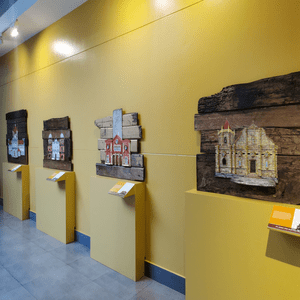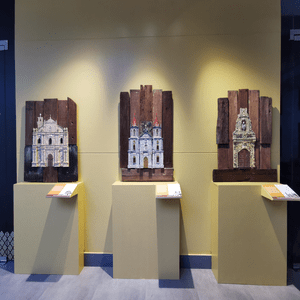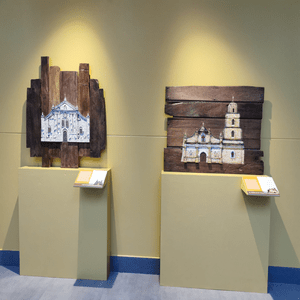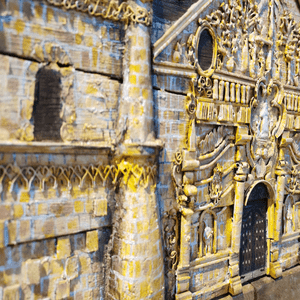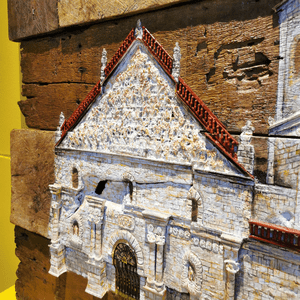| ‹ | Iglesia |
› |
|---|
Advocacy and artistry combine in this unique collection of mixed media artwork depicting Iloilo’s built heritage.
Iglesia features the work of Ilonggo artist Cristhom Selibio Setubal who uses found and disposed objects to recreate the likeness of Iloilo heritage churches. Through waste materials like aluminum sheets, espresso pods, computer parts, beads, chicken wire, and copper wire, he creatively highlights details of these well-loved structures.
Setubal’s process of transforming waste into art is called upcycling, in which newly-created objects become more economically and socially valuable than their original form.
The influence of Spanish colonial architecture remains evident in churches and cemeteries that demonstrate traditional construction methods, with intricate details on the façade, walls, floor, ceilings, and windows of churches reflecting Filipino artistry during the Spanish colonial period.
Cristhom “Dodoy” Selibio Setubal is a retired seafarer, a teacher, an artist, and a family man. In 2016, he started sketching Iloilo’s built heritage in pen and ink, which the Museum of Philippine Economic History exhibited in 2019.
He experimented with scrap materials to recreate Iloilo’s most iconic Spanish structures, enabling him to advocate for heritage appreciation and sustainable art.
The San Joaquin Camposanto, the first of his 14 works in this mixed media series, is a tribute to his late father, with whom he shared a passion and love for antiques.
Setubal’s art journey is a product of his love for antiques, then later expanded to arts, photography, history, and art sustainability. Now a part-time maritime school teacher, he is an artist-advocate for history, culture, and heritage. He influenced his daughter to paint and showed his community how to turn scraps and waste materials into art.
The Iglesia exhibit in the National Museum Western Visayas showcases the region's rich religious heritage, specifically the traditional church architecture and religious art of the Western Visayas.
The exhibit features a collection of religious artifacts, including statues, paintings, and other works of art that are commonly found in churches in the region. It also displays scale models of some of the most significant churches in Western Visayas, highlighting the unique architectural features and styles that are present in each one.
The exhibit is known for its comprehensive presentation of the religious art and architecture of Western Visayas, which reflects the influence of Spanish colonialism in the region. It provides visitors with a glimpse into the religious practices and traditions of the people in the region, and highlights the important role that religion plays in their daily lives.
In addition to the artifacts and models, the Iglesia exhibit also features interactive displays and multimedia presentations that provide a more immersive and educational experience for visitors. It aims to promote a deeper understanding and appreciation of the religious heritage of Western Visayas, and to encourage the preservation and promotion of these traditions for future generations.
View the exhibition at the atrium of National Museum Western Visayas.

